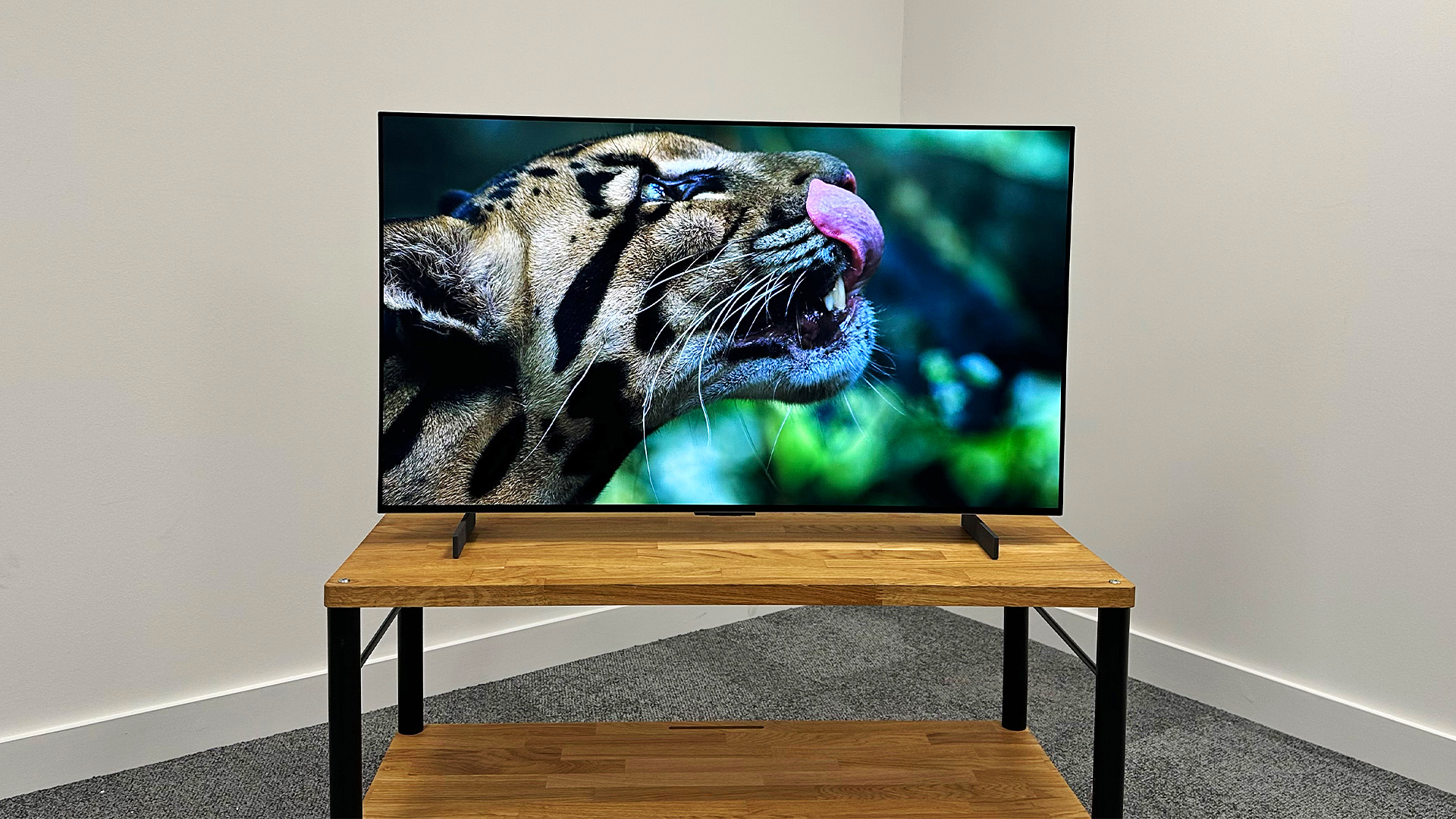
HDR formats: HLG, HDR10, Dolby Vision
Operating system: webOS 23
HDMI inputs: x4 (4 x 48Gbps HDMI 2.1)
Dimensions (hwd, without stand): 54 x 93 x 4.1cm
The 42-inch C3 is less bright than its bigger siblings, and less loud, but it has the same great features and operating system, plus excellent picture quality. It's not quite as affordable as the older C2, but once that sells out this will be by far the best value 42-inch OLED TV.
For
- Sharp, detailed picture
- Amazing contrast
- Exceptional gaming specs
Against
- Minor upgrade on C2
- Weak sound
- Slight lack of shadow detail
HDR formats: HDR10, HLG, Dolby Vision
Operating system: Google TV
HDMI inputs: x4 (2 x 48Gbps HDMI 2.1)
Dimensions (hwd, without stand): 55 x 93 x 5.7cm
Sony's first 42-inch OLED TV has the brand's typically great motion and is a joy to use, but it's pricier than the newer C3 (at time of writing – the price does vary) and less stunning visually. But its excellent audio and versatile design make it definitely one for the shortlist.
For
- Supremely sharp and detailed
- Excellent motion handling
- Solid set of gaming features
Against
- Not as rich or vibrant as some
- Occasional black crush
- LG C2 is even better for gaming
Small OLED TVs are a relatively recent phenomenon. LG was the first to launch a 48-inch 4K OLED TV in 2020, followed by a 42-incher a couple of years later. Since then, everyone's jumped on the bandwagon, with Sony, Philips and Panasonic all launching OLED TVs at 48 inches or smaller.
But at 42 inches, the field is a little thinner. Only LG, Sony and Panasonic currently offer this size of OLED TV (though Philips has said it will launch one, and Samsung makes a 43-inch Neo QLED model).
So whose is best? Sony hasn't launched any new 42-inchers this year, so we're pitting last year's A90K, which will remain in the brand's lineup until 2024 at least, against LG's brand-new 42-inch C3 in a bid to find out.
LG C3 vs Sony A90K: price
The A90K launched last year, so you would expect it to be cheaper than the 2023 LG C3. But this is Sony we're talking about, and its products rarely come cheap. Hence the A90K is currently more expensive than the C3 – prices are around £1499 / $1298 / AU$2695.
The C3's current price is £1299 / $1200 / AU$2595.
You might expect the A90K, as the older set, to get the bigger discounts but, given both companies' track records, we think it's actually the C3 that will drop in price more readily. In all likelihood, the price gap will get larger rather than smaller, though flash sales might occasionally drop the A90K below its LG rival.
Winner: LG C3
LG C3 vs Sony A90K: design
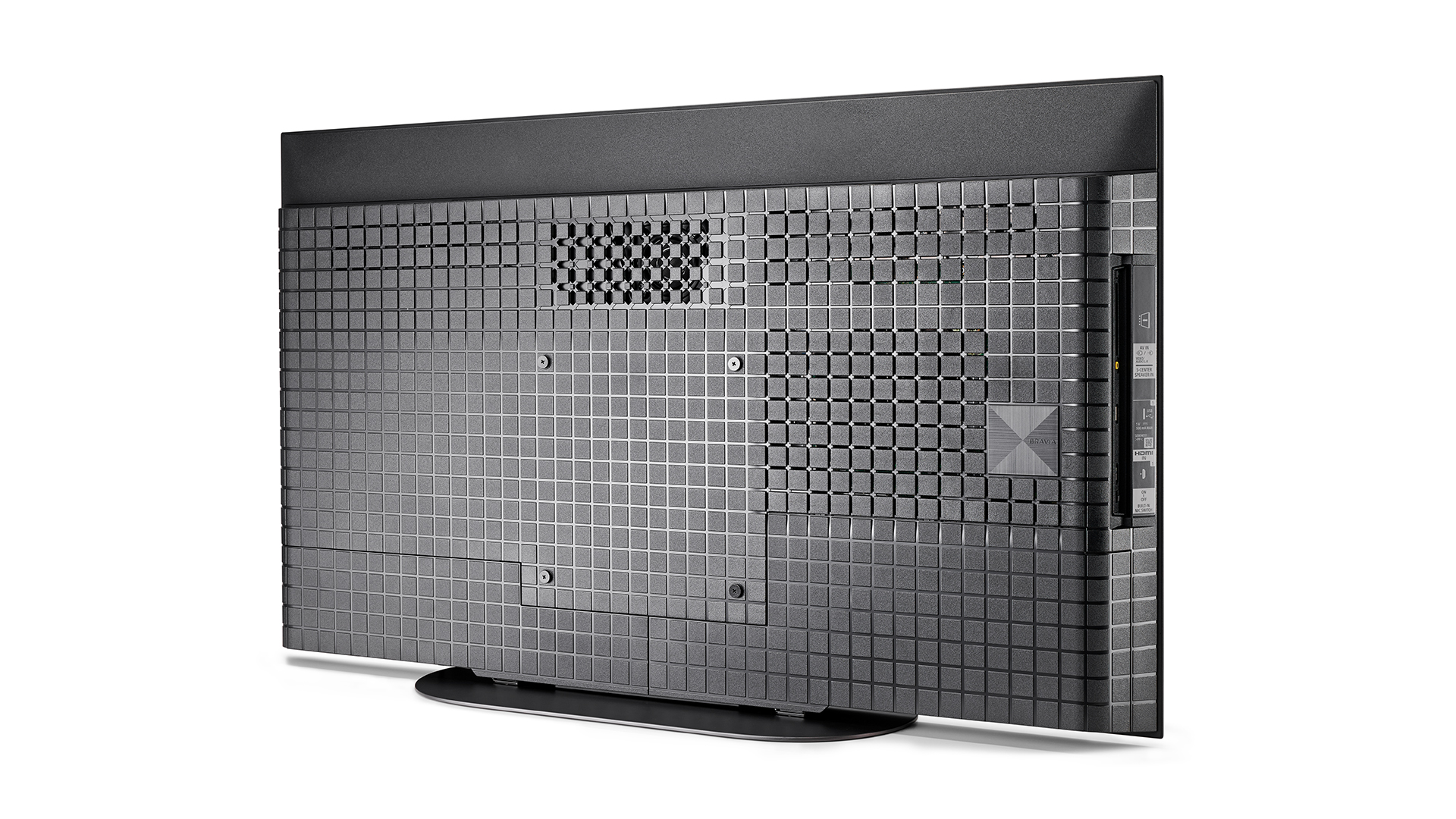
Because these TVs are so small, they have to pack a lot of technology into a diminutive footprint. Hence they're both on the portly side, which is not what you would expect – OLED TVs are usually svelte little numbers. But then all of the bulk is at the back, out of sight, so it shouldn't make much difference. For most people, the tradeoff of the smaller screen size is worth it.
The Sony A90K is the bulkier and heavier of the two TVs, though it carries its weight well, looking more stylish than the LG. It has a low profile, but can be raised a few centimetres with the use of stilts that come in the box – handy if you want to accommodate a soundbar.
The C3 isn't as versatile. The feet are stuck in place, meaning that only the slimmest soundbar will fit underneath without obscuring the view of what's on screen. The feet are a bit plasticky, too, all of which hands this round to the Sony.
Winner: Sony A90K
LG C3 vs Sony A90K: features
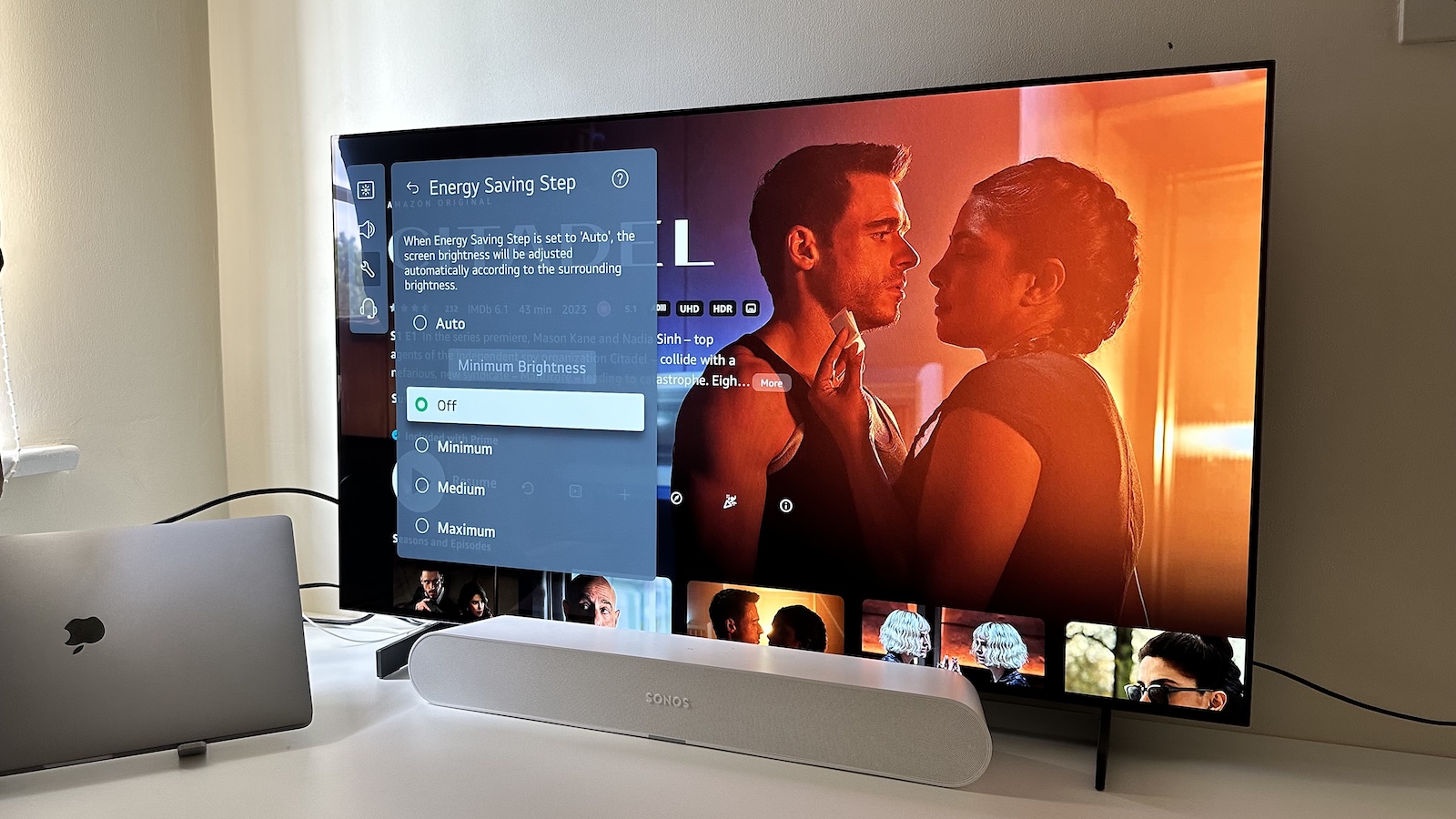
You might expect these smaller TVs to be lower-specced than their larger stablemates, and in some cases, you'd be right – most notably in that OLED TVs of 48 inches and smaller are capable of going less bright than larger models. Otherwise, though, there's very little holding them back and the LG, in particular, is exceptionally well appointed.
The C3 features four HDMI 2.1 ports, whereas the Sony only has two (its other two are standard HDMI 2.0 spec). That gives the C3 the edge in terms of gaming chops, as all four of its ports can handle the 4K/120Hz, VRR and ALLM signals output by the PS5, Xbox Series X and gaming PCs. It also has Dolby Vision gaming right up to 4K/120Hz, as well as an HGiG mode that is particularly well implemented and makes it easy to get better HDR tone mapping in many modern games. The A90K lacks both features.
If you're gaming a lot, and especially if you're switching between consoles often, the C3 will suit you much better.
But what if you're just using your TV for movies and shows? Then this round is less clear cut, although the C3 still comes out on top thanks to its better operating system. Its webOS 23 feels more cohesive than Sony's Google TV, and it has a better recommendations engine. With the A90K, it feels like you're using two operating systems – Google TV for content, but then Sony's own UI for settings. webOS 23 is also more responsive.
But rest assured that both TVs offer all the major streaming apps you could want, as well as most formats of HDR (HDR10+ is the one absence on both models, but it's not greatly missed).
Winner: LG C3
LG C3 vs Sony A90K: picture
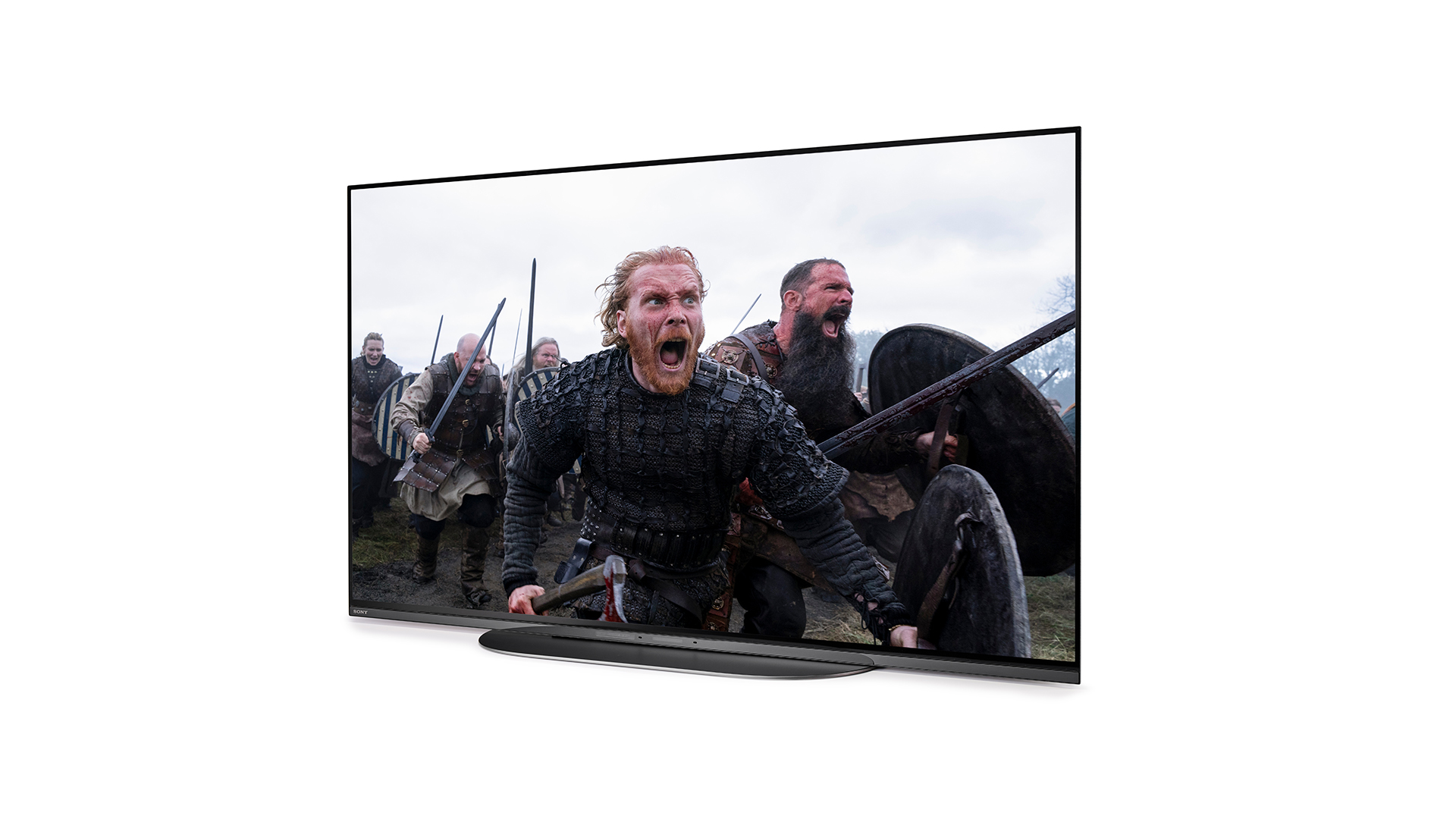
A crucial round, this. Which TV looks the best?
It's a close one, but the C3 edges it. The A90K is very sharp and detailed, and it has better motion than the C3 (this is an area that Sony has long excelled in). The A90K has a solid, deep image for a TV this size, but the colours are sometimes a bit more subdued than we would expect, with less pop and punch than the C3. It's by no means bad – in some scenes, it has more dark detail and brighter highlights than the C3 – but the usually brilliant always-active processing does sometimes brighten or darken a scene more than it should.
The 42-inch C3 might not be as bright as its bigger siblings, but it still has plenty of pop. The higher pixel density that comes with a smaller screen makes the picture look even crisper and sharper than its 55-inch-plus models, and it's fantastically dynamic. Add to that its natural colours and subtle shading, and you've got the best-looking 42-inch OLED going.
Winner: LG C3
LG C3 vs Sony A90K: sound
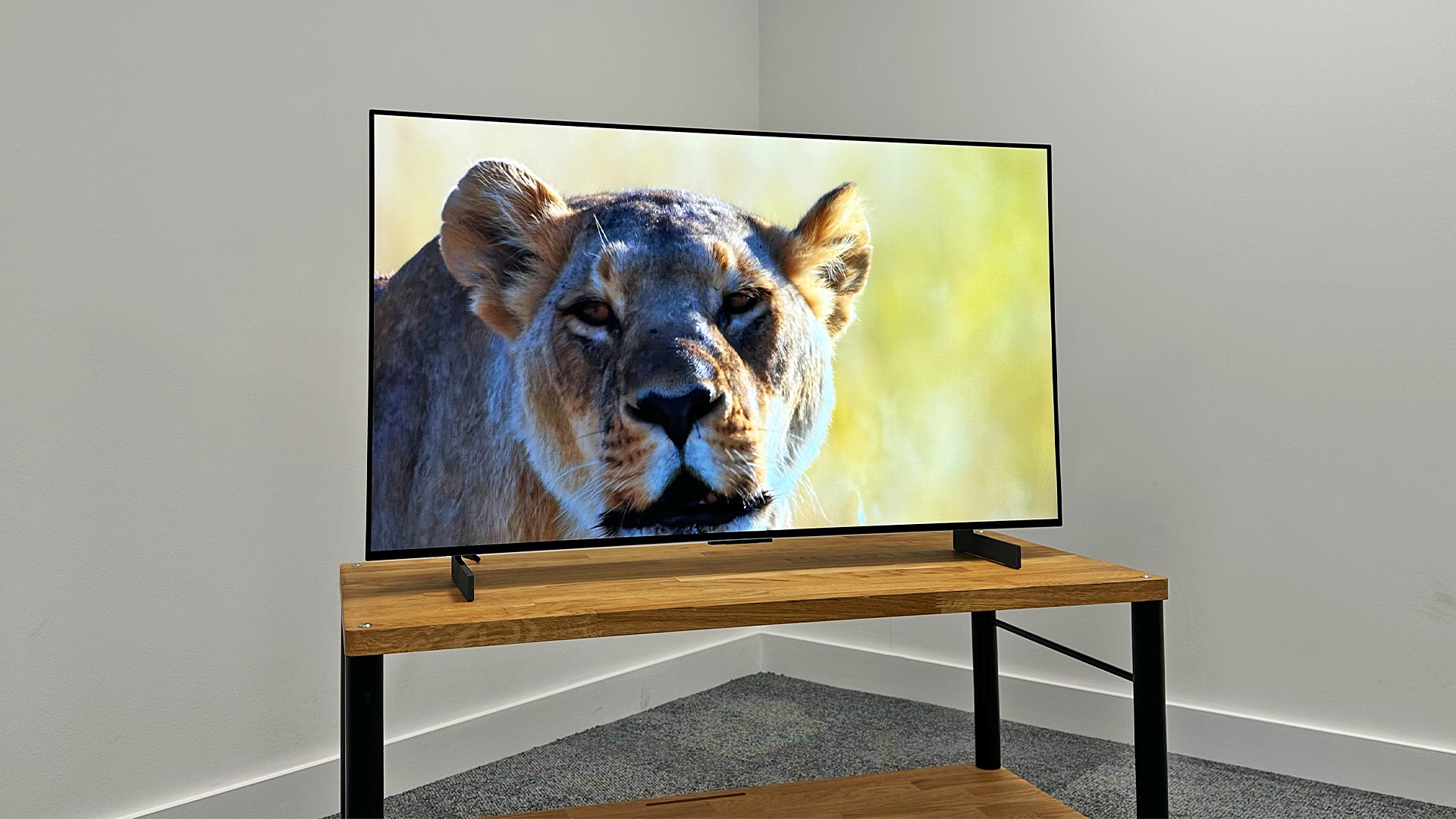
On the sound front, it's a different story. The A90K uses Sony's excellent Acoustic Surface Audio+ technology to devastating effect. With actuators placed behind the display panel, the screen effectively becomes one big speaker, able to pinpoint sound from different parts of the picture, so dialogue comes from characters' mouths while gunshots emanate right from the weapon's muzzle.
It works very well, even on the smaller screen size. The audio expands beyond the confines of the screen to make for an immersive experience, and there's good projection into the room. There's a high level of detail, and impressive dynamics.
The C3 sounds dull by comparison. The low end is a little limp, and the dynamics are barely there.
Both TVs' audio would be greatly enhanced by a soundbar.
Winner: Sony A90K
LG C3 vs Sony A90K: verdict
In all cases except sound and design, the LG C3 is the better option. It has better picture quality, more features, and is especially well suited to gamers. It's also cheaper, and will likey remain so.
But the Sony A90K has superb motion and is the better-sounding of the two. If it drops in price, it could be a seriously tempting proposition for those looking for big performance from a small TV.
MORE:
Also consider the Sony XR-48A90K
Read our Philips 48OLED807
Best TVs: brilliant budget to premium 4K Ultra HD TVs







